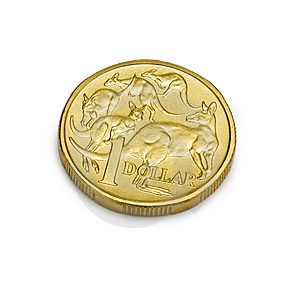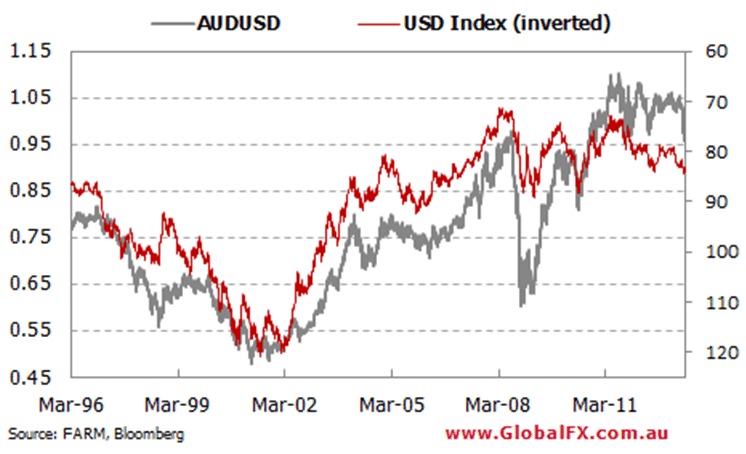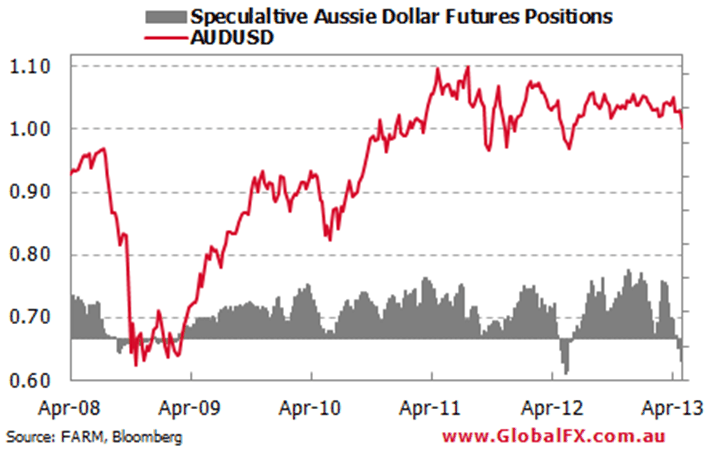
This article was first published at Intelligent Investor.
Run on the least ugly rule of thumb, currency markets are notoriously difficult to pick; a game of constant comparison that drives currency pairs to extremes. Take our own currency as an example. In April 2001, it traded as low as 0.4775 against the US dollar and in July 2011 as high as 1.1080. It has averaged 1.0331 since the start of 2010, compared with the long term post float average of 0.7560.
It’s now almost 30 years since the float of the Australian dollar and never has it been stronger than over the past few years. Only now are investors, surprised at the rapidity of the recent drop, waking up to this fact. The economy is starting to feel it too, with Ford closing down local operations and local tourism struggling as Australians head overseas.
Key points:
- Australian dollar is still trading well above its historical average
- Many of the factors that pushed it higher are now exerting a contrary effect
- With a recession the AUD could fall to around 60 US cents
Too many people explain away this strength with the phrase ‘commodities boom’ but it’s more complex than that. The five biggest traded currencies on the planet, of which the Aussie dollar is one, are assets in their own right and each is driven by particular factors. Let’s examine the five key influences on the Australian dollar.
1. Interest rates
The carry trade (the movement of capital away from areas of low interest rates to those offering higher returns) has been a large part of the Aussie’s strength over the past few years.
If you can borrow at 0.25% in Europe, the US or Japan and can invest it in Australian bonds, assets or bank accounts paying 3-4%, plus capital gains, why wouldn’t you? Just last week, NAB estimated that the upward pressure on the local currency as a result of the US Federal Reserve’s zero interest rate and their quantitative easing program could be worth as much as 20 cents in the Aussie.
And of course, those global investors could look at the Reserve Bank and feel pretty safe that if it were to reduce rates, it would do so cautiously and gradually. For the last few years, Australia has been a giant post box for international hot money.
2. Global and Australian growth
In addition to relatively high rates, global investors flocked to Australia after 2009 due to the resilience of the Australian economy, assisted by local and Chinese stimulus. We didn’t have a housing crash and we didn’t follow the US and UK economies into deep recession. We became a safe harbour, although that’s not to be confused with a safe haven like the Swiss franc, as we’ll soon explain.
3. The US dollar
The US dollar is the most underappreciated driver of the Aussie dollar. Traders and investors talk about growth, interest rates, the mining boom, the Budget position and household debt, but on the other side of the AUD/USD currency pair the same questions are asked of the US as an input into the Aussie.
Chart 1: AUD/USD exchange rate movement:
At Chart 1 shows, the deviations between the moves in the USD, which have been inverted for ease of reference, are a key driver of the Aussie. We could assert then, and with some certainty, that the perceived value of the US dollar is important.
As the US economy has struggled with moribund growth, radical monetary policies taking real interest rates effectively below zero, blowouts in the national budget and political gridlocks, its currency has suffered. The Aussie has risen as a consequence.
4. Investor sentiment
When we see a convergence of major drivers like this, investor sentiment itself becomes a fourth driver. Here, we enter the currency expectations market.
Currency futures contracts are traded on an exchange in the US. Data from the Commodity and Futures Trading Commission’s (CFTC) Commitment of Traders (COT) report can be used as a proxy for the speculative sentiment toward the Aussie.
As Chart 2 shows, since 2009 large speculators – hedge funds and the like – have been long the Aussie dollar for all but a brief period of market instability in the middle of last year when the Euro teetered. Generally, global speculators have long on the Australian dollar since the GFC.
Chart 2: AUD/USD Futures positions:
5. Technicals
Related to sentiment is our fifth driver: technicals. Traders use technical levels for entry, exit and positioning signals, which influence the direction of a currency.
The Aussie has had strong technical chart since the GFC; every new move led to a new high and every dip was followed by a rebound. Even as volatility reached extreme levels in the past few years, the chart for the Aussie remained indomitable. Its safe harbour status was never breached in a technical sense. That encouraged speculators and investors to buy the dips whenever global trouble loomed.
That’s how we got to where we are. To see where we might go, let’s now examine these five key drivers from the other angle.
Downwards pressure
Australian interest rates are falling much further than most forecasters anticipated. The main cause is that Chinese growth is slowing faster than many expected (although not us), pushing down the key export prices that drove Australia’s commodity boom.
As a result, mining projects have been cancelled en masse. Yet the boom ran long enough for mining companies to believe it would last. Even with the cancelled projects, lots of new supply is on the way, just as China slows. This will drive commodity prices down further still.
The likelihood is that Chinese and Australian growth, and Australian interest rates, will fall further. So although the carry trade into the dollar is still positive, with declining yields and an increased risk of capital loss, it now faces more headwinds.
To make matters more difficult for the Aussie, the US housing market is recovering. Although fiscal challenges loom and monetary policy is still very loose, markets are beginning to price in stabilisation to the former and a tightening in the latter.
Increasingly, in the passing beauty parade of foreign exchange, the US dollar is being viewed as the least ugly. As the US dollar index rises it is hitting a variety of asset classes, including gold and the Aussie dollar.
The convergence of drivers is, in other words, swinging away from the Aussie. Sentiment among hedge funds and speculative traders – see recent comments by George Soros and Stanley Drukenmiller – has turned against our currency.
Technicals have also been breached with the European crisis low of 2012 taken out and an increasingly vulnerable sideways pattern developing that has failed to break to new highs for some time. Indeed, it now looks more likely to break the other way.
How low can it go?
As recently as April this year, the Aussie was trading at around 1.0550 before the recent fall took it to a low of 0.9433. That’s a big fall of almost 11??%.
How low can it go? The NAB recently suggested the AUD could fall to 87 US cents by December 2014. But let’s remember that for all the extreme recent calls about the crash in the Aussie and the impending doom facing it, the reality is that it is simply back at the bottom of what might be considered a wide 10-15 cent range it has been in since breaking up through 94 cents in mid-2010. In context, this sell-off is not all that shocking and the forecasters of doom forget this.
A fall below 94 cents would signal a different and lower scenario. Our assessment is that this is likely, especially if the economy weakens due to the withdrawal of mining investment, assuming consumption doesn’t fill the gap. That may necessitate rate cuts to 2% or just below.
Despite the recent highs, the Aussie dollar’s average remains steadfastly around 75 cents. It may not revert to the mean but after 22 years without a recession, you wouldn’t want to bet on it.
So, what might happen if Australia did have a recession?
The answer was offered during the GFC low when global investors believed that was about to happen. Back then, it fell to 0.5960. There’s your answer.
This article was first published at Intelligent Investor.

